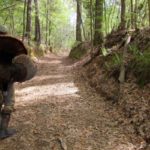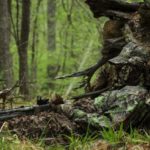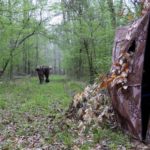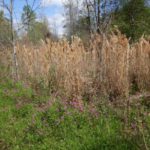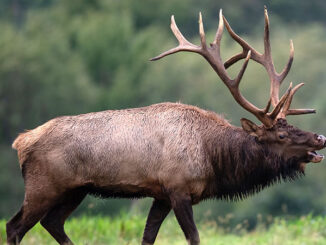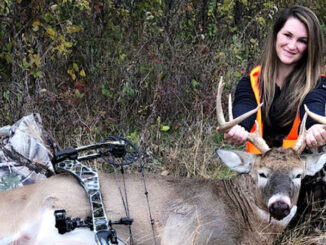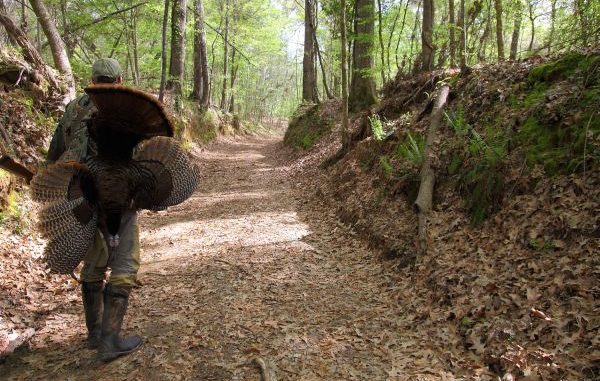
Follow this 40-year veteran of the gobbler wars, and you just might find a big gobbler strutting in front of your blind this season.
Sitting dejected with my chin touching my chest, the realization of blowing it started to sink in. Replaying the whole affair in my mind it seemed surreal. It happened way too fast for me to grasp and was something totally unexpected. After seeing an ad for a package turkey hunt at the elegant Briars Bed and Breakfast in Natchez called “Gobblers and Gardenias,” I felt there was no way I could go wrong with a shindig like that. Or so I thought.
At 55, I had never killed a turkey and really didn’t have access to a place where I could try over the years. This was something that both my wife and I could enjoy.
The package had turkey hunts for the guys and massages for the girls. Add that aspect to the ambience of an antebellum home surrounded by 25 acres of azaleas in bloom, a carriage ride through downtown and candlelight dinners at the Briar’s own restaurant called the Pavilion that overlooks the Mississippi River, and the fix was in. I’d hunt in the morning while she would be pampered.
Only, with head stuck to my chest, it was I who needed to be pampered. My guide, Leon Atkins (who along with his wife Kristy own the Briars) in that moment reassured me we’d have another opportunity.
Nonetheless, it was a lesson learned. It reminded me of when I was 14 years old and saw my first rooster pheasant rise. The gaudy cock rose off of a field sparkling with frost, and the morning sun magnified the bird’s iridescent colors. The 12-gauge shotgun I carried bucked against my shoulder with my cheek never touching the stock. My mind couldn’t overcome the beauty of the bird.
I missed.
Back at the Briars, Atkins had located the bird in the twilight with a barred owl call, and approaching from the east we walked about 400 yards to get into position. The turkey’s gobble rang through the air and bounced off of the hardwoods like a pinball. The hairs rose off my neck with excitement.
We sneaked quietly through the woods toward the gobbler, coming to a position my guide strategically to give us the advantage. It was a little knoll that overlooked a couple of ravines, where a slight depression in the hill’s contour helped break up our silhouette for the ambush. Some light brush in front of me would conceal my movement should a gobbler reveal itself and come to the decoys.
“I believe all of the Confederate generals had to be turkey hunters,” said Atkins. “The way they looked at the ground before they went into battle is the same thing a turkey hunter would do. A Southern general would think, ‘Is it to my advantage to set up here?’ Or, ‘Should I retreat and look for better ground?’
“That’s why we came in from the east. As the sun comes up in that direction, I knew (the gobbler) wouldn’t be able to see us. Because of the glare and light, he can’t see everything, and in low light everything is magnified.”
Atkins saw the bird before I did and whispered, “Do you see him?”
I whispered back, “No.”
When I did see the gobbler, like the rooster pheasant, I was mesmerized. Its waddle was crimson — almost neon. And it was close. Closer than I expected it to be. Then and there I could have shot, but didn’t for some reason.
It rushed — no streaked — to the decoys, and I finally reacted. But my shotgun became entangled in the brush and the turkey flushed.
I never fired a shot.
Atkins wasn’t concerned.
“They’re extremely suspect of everything,” he said. “It’s very rare to have one come in where you get away with any movement or anything, unless you’ve got other turkeys in. When there are other turkeys you can move sometimes because they think it’s just another turkey moving.
“But it takes 15-minutes or so before they get calm and they start loitering around.”
Atkins has achieved the grand slam five times — which consists of harvesting an Eastern, Rio Grande, Merriam and Oceola turkey — in the same year. But in spite of his success around the country, he would rather expound on the rich turkey-hunting heritage of Mississippi and the conditions that make the Natchez region one of the premier places to hunt.
“I think there has always been a heritage for turkey hunting in Mississippi, and particularly around Natchez on both sides of the river where I live,” Atkins said. “And because of that, turkey around here are protected — and that’s not just only from poaching, but also predators. Most people around here who are serious about turkey hunting have a good predator-control program, as well as a forest management program that’s conducive to turkeys. Most of what we have is hardwood, particularly mast-producing hardwood. Hardwoods that produce acorns and seeds of some sort are critical food that turkeys thrive on.
“But, also, you don’t want to see all of one timber type. The property that I hunt is a mosaic of different types of timber.”
Atkins said that, when developing and managing property for quality turkey hunting, hardwoods have to be thinned to provide understory suitable for brood habitat and also seed-producing plants.
“When you think of quail and what they need for habitat, it’s the same thing for turkey,” he said. “Turkeys need nesting habitat, and they need easily accessible food all throughout the year — not just certain parts of the year.”
By conducting a quick survey of the area Atkins hunts, you’ll immediately see plenty of soft mast such as dewberries, wild strawberries and black berries. In the spring, these plants provide energy for nesting hens to get a quick meal, and they typically last through May and the early part of June.
Hunters who hunt public land should keep this in mind and look for turkey sign around these wild berries. Dewberries and black berries have similar flowers but do have noticeable differences easily distinguished. The tangled dewberry shrub or plant is shorter and lower than blackberries. And also, the dewberry’s vines have a hairy skin where the blackberry’s vine is smooth.
In addition to soft and hard mast, Atkins also employs a supplemental-feeding program planting chufa. Chufa is a tuber similar to a peanut. According to Atkins it tastes like almonds, and it’s something turkeys apparently will travel miles for.
I was quick to notice Atkins called quietly and sparingly. This was opening day. A day I figured the calling would be amped up like Louisiana’s opening day of duck season. Every duck hunter in the marsh would be blasting a mallard highball, just because.
Atkins, who is a Tom Kelly acolyte who has met and read many of Kelly’s books such as “The 10th Legion,” said there’s no reason for filling the woods with sound.
“I don’t ever call loud,” he explained. “I just call loud enough for them to hear. Whenever turkeys fly down, what they do is gather up and just check each other out. Sometimes if there are any odd turkeys, they’ll get into a fight with them and try to run them off, because they’re family. All the turkeys in a flock are usually genetically related to each other.
“If they are wild purring, that usually brings gobblers in because — like boys — they like to be part of a fight.”
Atkins said his approach is to make gobblers feel comfortable.
“But, a contentment purr means everything is OK among family members and you’re welcome to come over. The cackle call is usually an excited hen call. It’s a hen ready to mate.
“But, the contentment purr and soft clucks work best for me. If a gobbler ever gets hung up, sometimes I’ll start scratching the leaves on the ground next to me, and they will eventually come over — it might be 10 in the morning, but he’ll eventually come.”
Atkins is serious about the little things when it comes to turkey hunting. He uses Dave Smith Decoys, typically a jake, submissive hen and gobbler, and tells a story how on an Oceola hunt in Florida they fooled a raptor because of their life-like appearance.
He also uses the terrain to break up his silhouette. He uses the sun to take advantage of a turkey’s keen eyesight, and calls sparingly to entice gobblers.
“Turkey hunting requires paying attention to every little detail, quite often several at the same time,” said Atkins. “It reminds me of military snipers and their attention to detail; they have a commitment to patience lying in one position undetected all day. I think of how it is similar to turkey hunting.
“The only real difference is the turkeys don’t shoot back. But, a gobbler doesn’t need much of an excuse to take a different route today if you don’t pay attention to details.”
Atkins made good on his reassurance when he located another turkey for me. This time, we sat at the base of some trees and deadfalls along an old logging road intersection on top of a hill overlooking a bottom.
With the turkey coming up hill in response to Atkins’ soft calling, he instructed me to shoulder my gun beforehand and shoot when the gobbler raised its head above the hill while distracted by the decoys. In textbook fashion, I did exactly as instructed and scored my first turkey.
“The old turkey hunters called it ‘the disease,’” Atkins said of turkey hunting. “And you are required to have two things — an understanding wife and boss.”
Atkins seems to have one aspect of his requirements covered, offering his “Gobblers & Gardenias” package hunt at the Briars.
What spouse could resist?
